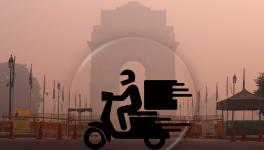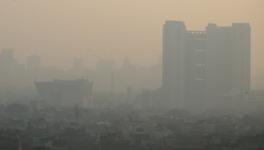AQI Breaches 999, Capital Struggles to Breathe Morning After Diwali
New Delhi: With Delhi’s residents flouting the ban on bursting firecrackers in the city on Diwali, the Air Quality Index (AQI) plummeted to hazardous levels on Friday. Citizens woke up to a densely grey morning, thick with particulate matter residue.
Residents of Burari in North Delhi, Paschim Vihar in West Delhi, Lajpat Nagar in South Delhi, and Shahdara in East Delhi reported incidents of firecracker bursting as early as 7 PM on Thursday. The blatant disregard of the firecracker ban became more intensified post-9 PM.
According to Delhi Pollution Control Committee’s data cited by The Indian Express, at the Jawaharlal Nehru Stadium station, for instance, PM2.5 levels increased from 389 at 8 PM Thursday to a high of 1,553 at 1 AM on Friday (levels are measured in micrograms per metre-cube). This is nearly 26 times the standard of 60 for PM2.5. It stood at around 1,164 at 6 AM on Friday.
PM10 levels at the station also heightened on Friday morning. At the Jawaharlal Nehru Stadium monitoring stations, PM10 levels hit 1,643 at 1 AM on Friday, up from 519 at 8 PM. The standard for PM10 levels is 100. Sulphur dioxide emissions recorded at the station also peaked around 1 AM on Friday at 35.5, while the level of nitrogen oxides hit a high of 142.8 at 1 AM, up from around 24.7 at 7 PM Thursday.
Furthermore, fog conditions also intensified on Friday morning as visibility dropped to the 200-500 metre range, according to scientists at the Indian Meteorological Department (IMD).
The neighbouring cities of Faridabad (424), Ghaziabad (442), Gurgaon (423) and Noida (431) also recorded ‘severe’ air quality with cracker bursting peaking after 9 PM on Thursday.
The escalation of AQI numbers does not bore well for heart patients (about one-fifth of all deaths in Delhi in 2017 were caused by heart-related illnesses). Airborne PM2.5 is known to cause and worsen cardiovascular diseases.
According to scientists at Centre-run SAFAR (System of Air Quality and Weather Forecasting And Research), a respite from the poisonous air in the capital should not be expected before November 7, as northwesterly winds are expected to carry stubble burning smoke from Punjab and Haryana towards Delhi.
SAFAR is forecasting an increase in the share of stubble burning’s contribution to Delhi’s AQI by 35% on Friday and 40% on Saturday.
"The firecracker ban didn't seem to be successful in Delhi, which led to hazardous pollution levels adding on top of existing perennial sources," Sunil Dahiya, Analyst, Centre for Research on Energy and Clean Air (CREA) was quoted saying in a Reuters report.
Get the latest reports & analysis with people's perspective on Protests, movements & deep analytical videos, discussions of the current affairs in your Telegram app. Subscribe to NewsClick's Telegram channel & get Real-Time updates on stories, as they get published on our website.























